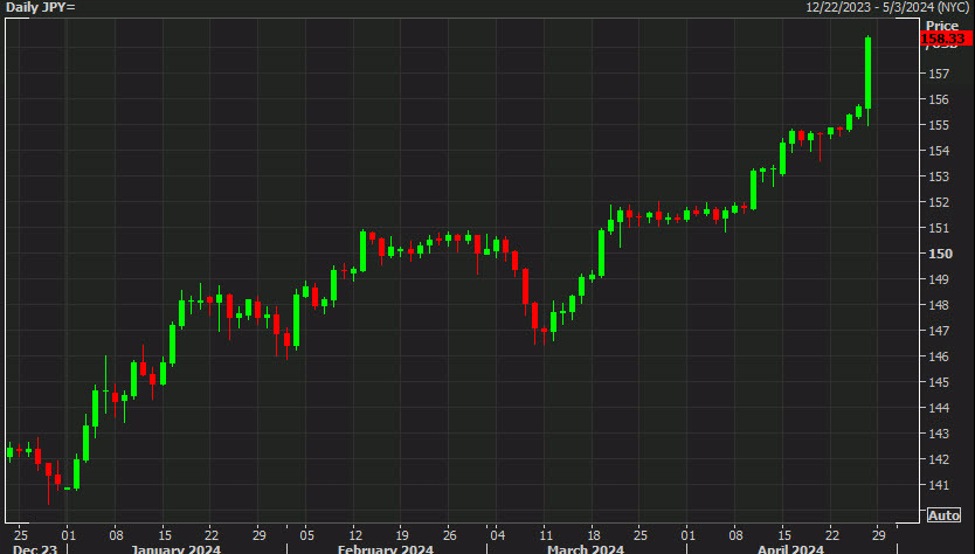The
weakening yen is unpopular in Japan and pressure is mounting on politicians for
action but there are no easy answers. I spoke with BNNBloomberg about the issues:
1) Rate differentials are the driver. You
can buy a 10-year Japanese government bond and get 0.9% per year or buy a US 10
and get 4.7%. Add in the weakening currency and there is a tidal wave of money
chasing this trade, which is a classic carry trade.
2) Intervention is an option but the
long history of intervention shows that it only helps when fundamentals are
improving. The Japanese government – which order the intervention – waved a bit
of a white flag this week in saying that it wasn’t currently weighing
intervention. That was a blunder because it gave the market the green light to
push further.
3) There was some hesitancy to push the
yen lower ahead of the Bank of Japan. In March they hiked rates for the first
time in 17 years and there was some angst they could tee up another move but
the decision was benign. They laid out an indeterminate timeline on hiking if
economic forecasts unfold as they hope.
4) Inflation isn’t rising. Somehow
Japan avoided the inflationary perfect storm that hit the rest of the world and
now prices are moderating. Today Tokyo reported CPI at 1.6% compared to 2.2%
expected. Now the miss was largely due to a one-off change to high school
tuition rates and the market picked up on that but it’s a headline that won’t boost
inflation expectations.
So what are
the options? The Japanese government can spend more to boost growth but that’s
hasn’t worked and the country is enormously indebted. There have been some
positive wage indications this spring but those will take 2-3 years to become
ingrained and hiking now would send the wrong signal.
So the
relief valve is the currency and it’s tough to see a floor.
USD/JPY daily
What Japan –
and much of the world – is hoping for is a turn in the US dollar and global
inflation. If other central banks begin cutting then those rate differentials
narrow. Alternatively, if a recession looks like it’s on the horizon, there
will be a surge in the yen.
With a
carry trade, the money moves steadily and slowly but when there is trouble, it’s
a race to the exits. Back just before the financial crisis, there was this same
dynamic and money was flowing into the high-yielding AUD and NZD it unwound at
breakneck pace, including days with 10% currency moves.
But all they
can do right now is wait.
What’s driving the US dollar side of the trade
The dollar
bid right now is driven by inflation fears and specifically the fear that the
Fed will have to hike again. I think we’re close to the point of maximum
pessimism on that front.
The market
initially focused on this week’s US inflation numbers – which were hot – but eventually
pivoted to focusing on growth. If you look at good’s prices, they’re flat y/y
and Wal-Mart on Thursday emphasized that and was even talking about lowering meat
and vegetable prices.
The US
government is also running a deficit at 7% of GDP (compared to 1.4% in Canada).
I think the US dollar ultimately turns when the fiscal belt tightens, which isn’t
going to be until late 2025 at the earliest, though maybe the market starts to
price it in after the election, depending on the results.
